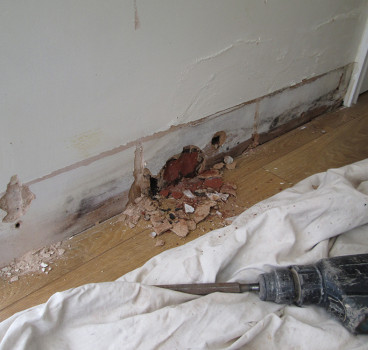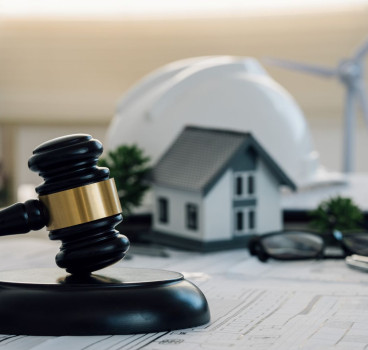Why Engineers Must Minimise Human Induced Vibrations in their Designs
A natural occurrence of someone walking is human induced vibrations. The effects of these vibrations aren't life and death but can impact structures in a variety of ways, whether they're buildings or bridges. Although not as serious as structural failure, minimising vibrations is a part of design that engineers need to largely consider in order to make people feel safe and comfortable. In this article, we'll look at the impacts of vibrations.
The Main Effects
The two main effects of human induced vibrations are resonance and aeroelastic fluttering.
In simpler terms, resonance happens when Object X vibrates at the same frequency as Object Y's natural frequency. Object Y resonates with this and begins to vibrate too. Think singing to break a wine glass! Although the person singing isn't touching the glass, the vibrations of their voice are resonating with the glass's natural frequency, causing this vibration to get stronger and stronger and eventually, break the glass.
Aeroelastic flutter happens when a force is exerted to an object which in turn makes it shake. It's not necessarily at the same frequency as Object B's natural vibration, but it makes Object B move all the same.
When something resonates, it also flutters. But not everything that flutters is necessarily resonating. This is how confusion over disasters such as the Tacoma Bridge collapse occur — for a long time, and to this day, the event is used as a textbook example of resonance. However, it's been argued that the bridge's collapse wasn't caused by resonance, but by fluttering.
When human force is exerted and causes an object to vibrate, this is fluttering. Some instances would also see resonation happening too, but it wouldn't be a certainty. Engineers must, of course, design to reduce the damage or discomfort caused by either fluttering or resonating.
Possible Effects
Vibrations from human footfall, and the fluttering or resonation it can cause, can have many effects on a structure. These include:
- Hindering sensitive equipment. Depending on the building's purpose, what it houses can be affected by the vibrations of people using the building. Universities, for example, may have sensitive equipment whose accuracy and performance could be damaged by vibrations.
- Effecting the structural integrity. The build-up of constant vibrations on a structure can, eventually, lead to structural integrity being compromised. A worse-case scenario would be the complete collapse of said structure.
- Effecting human health. According to research, vibrations in buildings and structures can cause depression and even motion sickness in inhabitants. Buildings naturally respond to external factors such as the wind or human footfall within. This low-frequency vibration can be felt, even subconsciously, by people. It has been argued that modern designs featuring thinner floor slabs and wider spacing in column design mean that these new builds are not as effective at dampening vibrations as older buildings are.
- Wobbling bridges. One of the most famous examples of resonance, human induced vibrations, and fluttering all impacting a structure occurred with the Millennium Bridge. As people walked across the bridge, the vibrations and swaying caused oscillations in the bridge. Everyone crossing the bridge would then sway at the same time to avoid falling over, resulting in a cycle of increasing and amplifying the swaying effect.
How to Prevent it
Compared to old designs, contemporary structures tend to integrate thinner slabs and columns that are spaced widely, making them vulnerable to vibrations. Using structural design software at the design stage is an effective method for engineers to test footfall on a design and see the resulting vibrations.
Although vibrations are something that happen naturally, engineers must consider reducing the effects of them in their designs to ensure security and comfort.
Sources:
https://www.oasys-software.com/news/analysing-vibration-with-gsa/
https://www.oasys-software.com/case-studies/footfall-analysis-singapores-helix-bridge/
https://www.oasys-software.com/case-studies/princeton-university-frick-laboratory/
http://homepage.tudelft.nl/p3r3s/MSc_projects/reportRoos.pdf
https://phys.org/news/2017-03-impact-bridges-skyscrapers-human-health.html
https://phys.org/news/2017-03-impact-bridges-skyscrapers-human-health.html
https://www.quora.com/Whats-the-difference-between-resonance-and-aeroelastic-flutter
Additional Blogs

How construction can cut Its carbon footprint by caring for soil
Soil is often dismissed as mere dirt, but it is one of the planet’s most powerful carbon stores, holding more than all of the world’s forests combined. Yet in our rush to build, pave and develop, we...
Read moreWhat is bridging damp? How it happens and how to fix it
Bridging damp happens when moisture finds a path around the building’s damp-proof course (DPC) so it reaches your internal walls and skirting. If you see damp patches rising above the skirting or...
Read more

The silent death of the fixed-price contract
For decades, the fixed-price contract has been the backbone of construction procurement. It promised certainty with a defined scope, an agreed sum and a clear transfer of risk from client to...
Read more